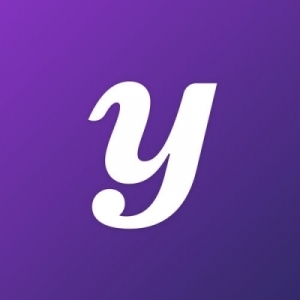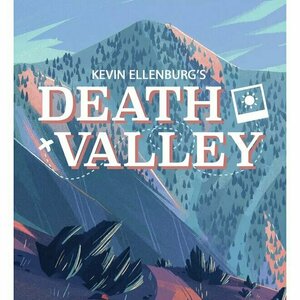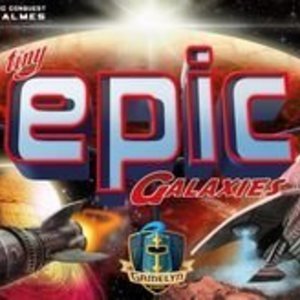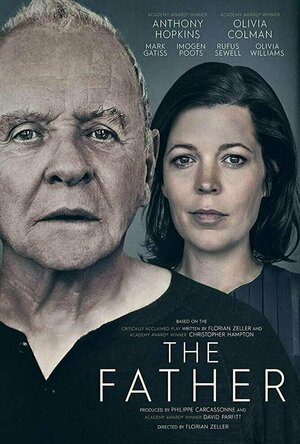Purple Phoenix Games (2266 KP) rated Death Valley in Tabletop Games
Jan 18, 2022
Death Valley is a game for 1-2 players in which you are documenting your journey across the Death Valley park. You will see different sights on your journey, and add cherished memories to your scrapbook. The player who amasses the most points by the end of the game is the winner! To setup for a game, shuffle the deck of Feature cards and reveal one face-up while the rest remain in a face-down deck. These cards make up the Desert. That’s it. The game is ready to start! Choose a starting player and get to sight-seeing!
Throughout the game, players will be adding Feature cards to their Journey tableau (places they have visited) and their Scrapbook tableau (the more memorable locations). On your turn, you will perform one of 2 actions: Travel or Rest. When you choose to Travel, you will select either the Feature card from the Desert (the face-up card), or draw the top card from the face-down deck and add it to your Journey. Conversely, when you choose to Rest, you will move a Feature card from your Journey into your Scrapbook. When moving Feature cards to your Scrapbook, you are allowed to hide other cards from your Journey underneath that card. Hiding cards can be beneficial for end-game points, or for preventing you from Busting. Many Feature cards have additional text at the bottom, that either provides ongoing abilities for the remainder of the game, or that provide extra scoring abilities at the end of the game. Choosing which Feature cards to move when and where is key!
After you have performed your chosen Action, you check to see if you Bust. If you have 3 Feature cards of the same type in your Journey and Scrapbook, you Bust! To resolve a Bust, you will discard from the game the right-most card in your Journey, and then will re-shuffle any remaining Journey cards back into the draw deck. So there’s a small element of push-your-luck in here! Once you resolve a Bust (if necessary), you will refresh the Desert – reveal a new face-up card if you just took the face-up card this turn. Your turn then ends, and play moves to your opponent. The game continues in this fashion, with players drawing/placing/moving Feature cards in their 2 tableaus, until only 1 card remains in the Desert. Points are then tallied: 1 point per Star on cards visible in your Journey, and points based on the extra scoring abilities of cards in your Journey and/or Scrapbook. The player with the highest score is declared the winner!
So, let’s get into this gameplay. For being a 2-player game, I appreciate that it’s not necessarily directly competitive. Yes, you want to score more points at the end of the game, but there really isn’t any player interaction, which keeps the energy level of the game more low-key. That being said, it’s decently strategic. Some Feature cards provide on-going abilities that can be used throughout the game, and can help you get some benefit out of a Bust. Certain card abilities rely on adjacency of other cards, so you have to know when/where to place a card to get the most points for the end of the game. That being said, you also have to make sure you don’t Bust. Luckily, you don’t resolve/check for a Bust until after you have performed your action, so perhaps you are able to sneak by with some clever planning. One part of the gameplay that misses the mark for me is the fact that you can only perform 1 Action per turn. I feel like that can really inhibit your ability to strategize, and makes it difficult to feel like you’re accomplishing something on your turns. Maybe if players had to perform both Actions per turn (either Travel/Rest, or vice versa), it would offer a few more options in terms of strategy. I just personally feel like taking only 1 Action per turn makes the gameplay a little too choppy, and makes it hard to really get into – especially when the game itself is so short. Maybe I’m not thinking strategically enough, but these are my thoughts thus far with Death Valley!
Components. As to be expected from ButtonShy – excellent quality of the cards and wallet. The artwork is colorful and thematic, and I just like looking at the different locations represented in the game. This game is satisfying to look at, and it earns high marks from me. Another neat thing? Each Feature card has a little interesting fact about its location, so you can learn a neat tidbit while playing the game!
Nothing can really compare to seeing Death Valley in person, but this game does offer a nice representation. The beauty of the location artwork coupled with the interesting facts has me intrigued outside of the game itself. The gameplay isn’t necessarily a home-run in my eyes, but it is strategic enough that I know I’ll keep pulling this one out from time to time. There is a solo mode, as well as a variant to give you more of a press-your-luck element, and I will definitely be trying those to see if they change my thoughts on this game. But for the time being, Purple Phoenix Games gives Death Valley a singed 4 / 6.
Purple Phoenix Games (2266 KP) rated Dreams of Tomorrow in Tabletop Games
Sep 17, 2020
Dreams of Tomorrow is game of set collection that utilizes a shifting rondel (I had to look up the definition too) in which players are working to weave a series of dreams into a complete Dream Sequence. Set in the future, players take on the roles of Dream Engineers, who are tasked with creating Dream Sequences to be sent to the past in an effort to save the future. Can you weave the most powerful Dream Sequence to alter the path of your present life, or is the future doomed to fall?
DISCLAIMER: We were provided a copy of this game for the purposes of this review. This is a retail copy of the game, so what you see in these photos is exactly what would be received in your box. I do not intend to cover every single rule included in the rulebook, but will describe the overall game flow and major rule set so that our readers may get a sense of how the game plays. For more in depth rules, you may purchase a copy online or from your FLGS. -L
To setup the game, place the Collective Consciousness (the rondel) in numerical order within reach of all players. Reveal a number of Dream cards from the Dream deck, based on the number of players, and these cards will create the communal Dreamscape. Each player receives a player card, cubes, and meeple in their chosen color, and sets their resources to the starting numbers, as described in the rulebook. All players begin with their meeples in the first space of the rondel, and in clockwise order, will select and pay for a Dream from the Dreamscape to be placed in their Dream Catcher (waiting area). Once all players have selected a Dream, and adjusted their resources accordingly, the game is ready to begin.
Dreams of Tomorrow is played over a series of rounds in which players will take turns performing 2 actions: Move and Take Action. Movement happens sequentially around the rondel, and players may choose how many spaces to move. To move 1-3 spaces is free, but to move more than 3 spaces will cost a number of resources. When a player decides to end their movement, they will then take the action indicated on the space on which they landed. These actions include: Gaining resources, Catching a Dream, Weaving a Dream, or Activating a Dream Ability. Gaining resources is pretty self-explanatory, and there is one neat thing to note: even if it is not your active turn, most of the rondel spaces have a Shared Effect, which grants an off-turn action to all non-active players. Catching a Dream means that you pay the requisite resources and select a Dream from the Dreamscape. Any caught Dreams go into your Dream Catcher until you are able to perform the Weave a Dream action. When you Weave a Dream, you again pay the requisite resources displayed on the Dream card and move the Dream from your Dream Catcher into your Dream Sequence (play area). To Activate a Dream Ability, you select a Dream card in your tableau, and use the ability printed on it. It is important to note that once Dreams are woven into your Dream Sequence, they will overlap each other, and only one Dream Ability will ever be available for use, so create that sequence wisely! Play continues in turns until one player has woven a Dream Sequence of five Dreams total. The round ends once all players have taken the same number of turns, and then final points are counted. The player with the highest score is the winner!
So all-in-all, how is Dreams of Tomorrow as a whole? I actually was very surprised at how much I enjoyed this game. When reading through the rules, it seemed kind of complicated and I was a bit worried before my first play. Once you actually get playing, however, the game is pretty intuitive and simple to play. One thing I particularly enjoyed about this game is its iconography. With only three resources and four actions, there are only seven icons of which to keep track. It keeps the cards from being cluttered with text, and makes the costs/abilities clear to understand. The iconography of the Dream Abilities, however, can be a liiiittle more complicated, but the game does come with Reference Cards which explain what every single icon means!
Another neat thing I enjoyed about this gameplay is the addition of Shared Effects. Even if you are not the active player, you will always gain some resource on everyone else’s turn. That adds an extra element of strategy because you have to amass your own resources for Dreams, but you have to be careful not to be giving your opponents too much extra help for themselves! Probably my favorite part of Dreams of Tomorrow are the actual Dream Abilities themselves. Performing the regular turn actions are pretty straight-forward, but Dream Abilities are more special and allow you to do even more on your turn. For example, some Dream Abilities allow you to change directions, move extra spaces, or even alter the Collective Consciousness, re-arranging the cards in a way to benefit you and hopefully hinder your opponents. The Dream Abilities are literal game-changers, and they really keep all players on their toes.
Talking about components, this game is of a pretty good quality. The cards are nice and sturdy, the player boards are decent, and the meeples and cubes are your standard wooden tokens. I’ve said in reviews before, but I always appreciate when games include Reference Cards for players, and Dreams of Tomorrow certainly delivered on theirs. The cards are clear, concise, and helpful during play. The artwork of this game is very vibrantly colorful and just plain pretty to look at. I found myself getting distracted by admiring the artwork, or catching Dreams based on their artwork, instead of taking their point-values or resources requirements into consideration. Oops. That’s just my bad, but the artwork really helps make the game more immersive.
Overall, I would say that Dreams of Tomorrow is a great little game. Admittedly, the rulebook is kind of daunting and seems a little overly complicated at first, but once you get into an actual game, it flows very quickly and easily. After just one turn, I got exactly what was happening and had no further questions about the gameplay. It really went above and beyond my expectations, and is one that I definitely look forward to bringing out in future game nights. Purple Phoenix Games gives it a dreamy 10 / 12. Check this one out if you haven’t before, it may just be the game of your dreams. (Ha, get it?)

Yogaia: Live Yoga Classes
Health & Fitness and Sports
App
Take your studio with you wherever you go with Yogaia + Manduka, the only live-streamed and...

Zoosk - #1 Dating App
Dating, Lifestyle and Social Networking
App
With the #1 dating app, 3 million messages sent daily, 8 million verified photos, and 40 million...
Purple Phoenix Games (2266 KP) rated Tiny Epic Galaxies in Tabletop Games
Jul 16, 2019
In Tiny Epic Galaxies, you are the leader of a galactic empire looking to expand its borders and influence across space. Unfortunately, you are not the only one vying for power – competing galactic leaders are also gathering resources and sending out scouts to planets in hopes of bringing them into the folds of their own empires. Can you outwit your opponents and stake your claim on these new planets before your rivals do? Or are you doomed to live under someone else’s rule forever?
DISCLAIMER: There are several expansions to this game, but we are not reviewing them at this time. Should we review them in the future we will either update this review or post a link to the new material here. -T
Tiny Epic Galaxies is a game of dice rolling and area control/influence in which players take turns rolling dice and activating powers in order to gather resources and increase their influence on newly-discovered planets. On your turn, you will roll a specified number of dice, and activate them in any order you choose to perform any of the available actions: move a ship, advance your colonization of a planet, acquire resources, or utilize the special power of a planet you control. Gaining control of a planet earns victory points, and the game ends once a player has reached 21 VPs. Sounds simple enough, right? But here’s a twist – when you activate a die on your turn, any other player can spend a resource to follow your action and perform the same action you just did. Make sure you keep an eye on your opponents’ ships and resources – a beneficial action for you could also earn your opponents a planet!
My absolute favorite part of all the Tiny Epic games is that they have so much more to offer than meets the eye, and Tiny Epic Galaxies is no exception. The premise of the game is simple and easy to learn, yet mastering the strategy is what keeps me coming back for more. There is no single strategy for guaranteed success, and the necessity to adapt strategy based upon your dice rolls keeps the game engaging and exciting. You may have a plan in mind, but unless the dice cooperate, you’ll have to adjust that plan on the fly. And you’ve also got to pay attention to your resources and your opponents’ turns, because you might be able to capitalize on their dice if you can afford the cost. It could potentially always be your turn, even if it’s not your official turn, since you have the ability to follow an opponent’s action. You’re coming up with your own strategy, while also trying to decipher your opponents’ strategies so you can outwit them and earn the most VPs the fastest.
Another great part of this game is that there is a good amount of player interaction, but not in a way that feels confrontational. In some situations it may feel like a bit of ‘take that,’ but remember – you’re the one who gave them the opportunity to take that action! Without you taking the action in the first place, your opponent would not have had the chance to follow you! Your strategy must transcend your individual galaxy and also take into account every other galaxy in play. In Tiny Epic Galaxies, you’re constantly interacting – some interactions are just more subtle than others.
Tiny Epic Galaxies is perhaps my favorite Tiny Epic game to date. It’s quick, simple, and yet deceptively strategic. Plus the little spaceships are so cute! If I had to pick one Tiny Epic game to use to introduce someone to the series, I would pick this one. Purple Phoenix Games gives Tiny Epic Galaxies an out-of-this-world 17 / 18.

Gruffalo: Games
Education and Games
App
Based on the UK's favorite bedtime story, 'The Gruffalo', from the creators of 'Room on the Broom'. ...

Mass Politics in Tough Times: Opinions, Votes and Protest in the Great Recession
Larry M. Bartels and Nancy Bermeo
Book
The impact of the Great Depression on politics in the 1930s was both transformative and shocking....
BankofMarquis (1832 KP) rated The Father (2020) in Movies
Apr 7, 2021
And that is enough to make this film very entertaining and interesting…but, unfortunately…this piece of entertainment falls flat at the end, so one will have to be contented to watching a decent drawing room drama (based on a Stage play) starring 2 strong Oscar winning actors at it’s core.
Written and Directed by Florian Zeller, THE FATHER tells the tale of a…well…FATHER, who is aging and mentally deteriorating. His daughter is trying to aide him and bring him comfort, but his befuddled mind begins to see things (conspiracies) that are not there…or are they?
Zeller wrote the lead role, specifically for Anthony Hopkins and it is a very good thing that Hopkins agree to this role for he is in EVERY scene and commands this picture as only a performer of Hopkins stature and abilities can. Hopkins is, rightfully, nominated for this performance and could pull the upset (but I highly doubt it).
Strongly supporting him - in an Oscar nominated turn herself - as Olivia Colman as his daughter. She has the much less flashy - but no less important - role in this drama and Hopkins would not be as good as he is without her to play against.
Zeller (who was nominated for an Oscar for his Screenplay adaptation of his Stage Play) was smart to cast a strong ensemble of British Stage Actors for this film - Mark Gattis, Olivia Williams, Rufus Sewell and Imogen Poots are all strong, interesting people to watch on screen and they help bring an air of seriousness and gravitas to the proceedings.
The first half of this film is extremely fascinating to watch and I was intrigued by the premise, the direction, the script and the direction it seemed to be headed. But…unfortunately (at least for me) the 2nd half of the film (and I would imagine, the Stage Play) never, really capitalizes on the promise of the first half and THE FATHER just sorts of peters out in the end.
Which, I guess, you could say for the poor souls who suffer from dementia, but I don’t think that was the point that Zeller was trying to make.
Letter Grade: A- (did I mention that I really, really liked the first half)
8 stars (out of 10) and you can take that to the Bank(ofMarquis)





